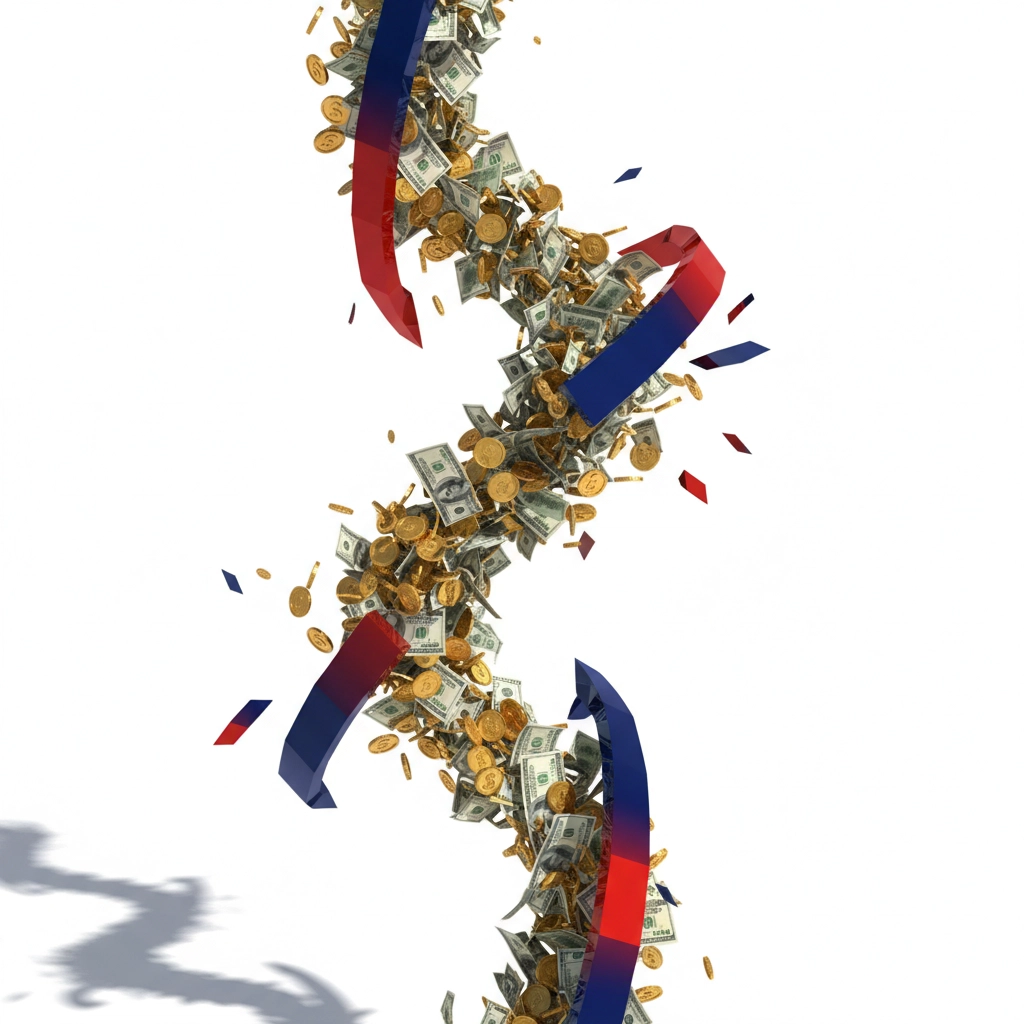The Internal Revenue Service has implemented substantial modifications to retirement contribution regulations that directly impact federal employees and their long-term financial planning strategies. These changes, effective beginning in 2025, introduce enhanced contribution opportunities while simultaneously establishing new mandatory requirements for higher-income earners.
IMPORTANT NOTICE: This content is provided for informational purposes only and does not constitute investment advice, tax guidance, or financial planning recommendations. Federal employees must conduct their own research and consult with qualified financial professionals before making retirement contribution decisions.
Understanding Traditional Catch-Up Contributions
Federal employees aged 50 and older remain eligible for standard catch-up contributions to their Thrift Savings Plan (TSP) accounts. For calendar year 2025, the catch-up contribution limit is established at $7,500 above the standard annual contribution limit of $23,500. This provision allows eligible participants to contribute a total of $31,000 annually to their TSP accounts.
The traditional catch-up contribution mechanism serves as a critical tool for federal employees who may have experienced delayed career starts or periods of reduced savings capacity. These additional contributions provide tax-deferred growth opportunities during the final working years when earning potential typically reaches its peak.
WARNING: Contribution limits are subject to annual adjustment by the Internal Revenue Service. Participants must verify current year limits before making contribution elections.

The Super Catch-Up Provision: Enhanced Savings for Ages 60-63
The SECURE 2.0 Act introduced the Super Catch-Up Contribution provision, representing the most significant expansion of retirement savings opportunities in recent legislative history. Federal employees aged 60, 61, 62, or 63 during the calendar year are now eligible to contribute $11,250 in catch-up contributions, representing a 150% increase over the standard catch-up amount.
This enhanced contribution limit enables qualifying federal employees to contribute up to $34,750 annually to their TSP accounts ($23,500 base limit plus $11,250 super catch-up contribution). The super catch-up provision specifically targets the critical pre-retirement window when federal employees maintain substantial earning capacity while approaching their planned retirement dates.
Eligibility Requirements for Super Catch-Up Contributions
The super catch-up provision applies exclusively to participants who attain ages 60 through 63 during the contribution year. Federal employees outside this age range remain subject to standard catch-up contribution limits. Participants must verify their plan’s administrative capability to accept super catch-up contributions, as implementation requirements may vary across different retirement systems.
COMPLIANCE NOTICE: Federal employees must confirm their specific plan’s adoption of super catch-up provisions. Not all retirement plans have implemented the necessary administrative systems to accommodate enhanced contribution limits.
Mandatory Roth Catch-Up Requirements for High-Income Earners
Beginning January 1, 2026, the Internal Revenue Service will implement unprecedented mandatory Roth contribution requirements for catch-up contributions made by high-income federal employees. This represents the first mandatory Roth provision ever incorporated into federal tax code.
Federal employees whose W-2 wages from their employing agency exceeded $145,000 during the prior calendar year must designate all catch-up contributions (both standard and super catch-up amounts) as Roth contributions rather than traditional pre-tax contributions.
Critical Implementation Details
The mandatory Roth requirement applies specifically to:
- Thrift Savings Plan (TSP) contributions
- 403(b) plan participants (applicable to certain federal employees)
- Governmental 457(b) plan participants
The requirement does NOT apply to:
- Non-governmental 457(b) plans
- SIMPLE IRA arrangements
- Employees with W-2 wages of $145,000 or less
IMPORTANT LIMITATION: The $145,000 threshold applies exclusively to W-2 wages received from the current employing federal agency during the prior calendar year. Self-employment income, investment earnings, and wages from previous employers are excluded from this calculation.

Tax Implications of Mandatory Roth Contributions
Federal employees subject to the mandatory Roth requirement will contribute catch-up amounts using after-tax dollars, eliminating immediate tax deductions for these contributions. However, qualified withdrawals during retirement, including both contributions and accumulated earnings, will be distributed tax-free.
This fundamental shift requires high-earning federal employees to reassess their retirement tax planning strategies. The loss of immediate tax deductions must be weighed against the long-term benefit of tax-free retirement income.
NO INVESTMENT ADVICE: This information does not constitute tax planning advice. Federal employees must consult with qualified tax professionals to evaluate the impact of mandatory Roth requirements on their individual circumstances.
Implementation Timeline and Compliance Requirements
The Internal Revenue Service initially proposed implementing these changes for calendar year 2024, creating significant administrative challenges for federal agencies and retirement plan administrators. Following industry feedback and implementation concerns, final regulations were issued on September 15, 2025, establishing January 1, 2026, as the mandatory effective date for Roth catch-up requirements.
Transition Period Benefits
During calendar year 2025, all federal employees aged 50 and older may continue making catch-up contributions to traditional, tax-deferred accounts regardless of income level. This transition period provides one final opportunity for high-earning federal employees to maximize pre-tax catch-up contributions before mandatory Roth requirements take effect.
CRITICAL ACTION REQUIRED: Federal employees earning more than $145,000 should maximize traditional catch-up contributions during 2025 to capture final pre-tax savings opportunities.
Strategic Considerations for Federal Employees
For Employees Aged 50-59
Federal employees in this age category should immediately verify their current catch-up contribution elections and ensure maximum utilization of available tax-deferred savings opportunities. The standard $7,500 catch-up contribution represents substantial additional retirement accumulation potential when combined with compound growth over remaining working years.
For Employees Aged 60-63
This demographic faces the most significant opportunity under the new regulations. The super catch-up provision provides an additional $3,750 in annual contribution capacity beyond standard catch-up limits. Federal employees in this age range must evaluate whether their retirement plans have implemented super catch-up capabilities and adjust contribution strategies accordingly.
For High-Income Federal Employees
Employees earning more than $145,000 annually must begin immediate preparation for mandatory Roth catch-up requirements. This includes:
- Evaluating current tax bracket positioning
- Projecting retirement tax rate scenarios
- Assessing liquidity needs for after-tax contributions
- Reviewing overall retirement account tax diversification

Compliance and Risk Considerations
Federal employees must understand that retirement contribution regulations are subject to ongoing modification through legislative and regulatory processes. Future changes may further alter contribution limits, tax treatment, or eligibility requirements.
IMPORTANT DISCLAIMER: Failure to comply with contribution limits and mandatory requirements may result in tax penalties, excess contribution corrections, and potential disqualification of tax-advantaged treatment.
Documentation Requirements
Federal employees should maintain comprehensive records of:
- Annual W-2 wage statements
- Contribution election forms
- Plan administrator communications
- Tax professional consultations
DO YOUR OWN RESEARCH: This information provides general guidance only. Federal employees must independently verify current regulations, contribution limits, and plan-specific requirements before making retirement contribution decisions.
Action Steps for Federal Employees
- Review current TSP contribution elections and verify catch-up contribution status
- Confirm age-based eligibility for standard or super catch-up contributions
- Calculate projected 2025 W-2 wages to determine 2026 Roth requirement applicability
- Contact TSP or retirement plan administrators to verify super catch-up implementation
- Schedule consultations with qualified financial professionals to evaluate tax planning implications
NO INVESTMENT ADVICE: These action steps are provided for informational purposes only and do not constitute personalized financial planning guidance.
Federal employees must recognize that maximizing retirement savings opportunities requires ongoing attention to regulatory changes and proactive adjustment of contribution strategies. The new IRS catch-up rules represent both enhanced savings opportunities and increased complexity in retirement planning decisions.
FINAL COMPLIANCE NOTICE: This content is provided for educational purposes only. Federal employees must consult with qualified tax and financial professionals before implementing any retirement contribution strategy. Individual circumstances vary, and professional guidance is essential for optimal decision-making.



